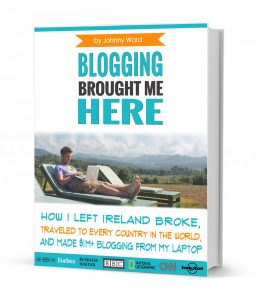Trendspotting: The Freshest Aussie Food, Music, and Micro‑Festivals
New technology and innovation are shaping all industries and markets. But it seems that in everyday life, hobbies, and fashion, we are turning back, reaching for some nostalgia. Slow cooking, herbs and homegrown plants, GMO-free food, backyard art selling – these are all 80s concepts. But these trends are definitely back on track, and the retro and community vibe seems to hit everything, from choosing to play at a new Australian casino to booking a restaurant that offers authentic cuisine. This is not a decline but an upgrade to more harmonious and community-engaged hobbies and personal life, opposing the FOMO movement and constant crowds.
Native Ingredients Renaissance in Aussie Cuisine
Culinary experiences are “in” despite the rise in dining out expenses. The Aussie plate is being redefined, and we are not discussing vegetarian and vegan trends. We are discussing the rediscovery of bush tucker ingredients, those spices originally used by Aboriginal Australians for centuries. They’re local, not typical for any other cuisine in the world, and back in the Aussie dining scene. This trend supports local businesses, small planting houses and the global “superfood” wave. And if you are all about a healthy lifestyle and taking supplements, adding these herbs to your everyday kitchen will reduce the pills and add flavour to your favourite dishes!
A few of the most popular bushfood ingredients making waves include:
- The Kakadu Plum: A famous superfood that contains 100 times the amount of vitamin C as a regular orange, making it the single food ingredient that supplies enough vitamin C without the need to take supplements or vitamins.
- Saltbush: A wild herb whose leaves add a savoury, salty punch to dishes, now popular on grilled meats and in gourmet salads.
- Lemon Myrtle: A citrus, aromatic leaf used in everything from herbal teas and spice rubs to cocktails and ice creams.
- Pepperberry: A peppery native berry prized for its bold flavour and health perks, since it contains about three times more antioxidants than blueberries.
Celebrated chefs are championing this movement as well. Melbourne’s Big Esso and Mabu Mabu restaurants (led by Torres Strait Islander chef Nornie Bero) have built entire menus around accessible Aussie products like pepperberry, saltbush and wattleseed. “The rise of native ingredients is a cultural awakening that leads the fine dining trend in Australia,” observes Lola Henderson, local gambling expert at AuCasinosList.
“By blending bush tucker with everyday cuisine, Aussies are embracing their roots and creating a cuisine that’s uniquely ours, far beyond the old meat pie and Pavlova,” she adds, noting how this trend also supports Indigenous growers and a more sustainable food system. “It seems a 60,000-year-old food culture has suddenly become Australia’s freshest culinary inspiration, and diners and customers can’t get enough,” Henderson adds.
Micro-Festivals and Night Markets: Small Events, Big Community
Not everything has to be huge to punch above its weight, and Aussie micro-festivals and night markets prove it beautifully. “If you’re up for a bite-sized social gathering that doesn’t have to burden your budget, take advanced planning, or create anxiety waves due to the enormous crowds, you’re not old or exhausted. You’re up for a reinvented type of fun,” says Henderson.
A beautiful Aussie example is Lake Macquarie’s brand new Lake Mac Micro Festival (28-29 June). Though it’s just a two-day venue, there were 14 performances across seven quirky venues, from gallery pop-ups in MIMA to reggae grooves at Rathmines Theatre. The focus was set on fun and local talent, as well as unexpected spaces and minimalist stage and light show setups.
These bite-sized micro events often focus on a specific theme or genre, whether it’s a boutique folk music weekend, a street art crawl, or a multicultural food fair.
Alongside the culture of DIY handcrafts, pop-up cafes, and restaurants with unfamiliar, new food have surged. Australia has welcomed many foreign citizens from different nationalities, cultures, and religions. This vibe has enriched the overall lifestyle of Aussies with localised night markets. It allows you to be something else by day and a completely different person when crawling the night. It gives a different, fresh vibe to the Aussie street. A perfect example is Sydney’s Ramadan Nights in Lakemba, which began about 10 years ago as an after-prayer gathering for Muslims. Now? It’s a month-long night market that attracts all cultures, Muslim and non-Muslim citizens, to Haldon Street for halal-friendly food and a festive atmosphere.
Likewise, in Melbourne, the seasonal Queen Victoria Winter Night Market has become a beloved weekly event. Complete with live music and food trucks, it draws locals out on chilly nights to mingle over hot mulled wine and gourmet doughnuts.
Both micro-festivals and night markets show how Australians are gravitating towards authentic, easily accessible, and community-driven experiences. There’s a sense of “we are all in this together” at these events, and they have lower barriers to entry, ranging from low-cost to no-cost participation.
Emerging Entertainment & Tech Trends
From Friday night hangouts to Sunday afternoon scrolling, Aussies are reshaping how they entertain, play, and interact in their social circles.
- Immersive and tech-driven fun: Think of VR gigs (yep, they are a thing), art walks, and interactive theatre that turn the “just watch” to “being part of the story” experience.
- Short-form video culture: TikTok and Reels aren’t just for dance crazes anymore, but breeding new comedians, micro-storytellers, and homegrown influencers discussing niches that make psychological and personal connections.
- The local gaming boom: With tax incentives fuelling new studios, Australian-made video games are levelling up the local and global scenes as well.
“We’re in an age where a night out could mean trying native-inspired tacos, catching an indie band, and playing a few hands on the best Australian online gambling platforms before bed—everything in a single night,” Lola Henderson from AuCasinosList explains. “It’s entertainment à la carte, and Aussies are ordering a lot.”
Backyard Gigs and the DIY Music Scene
Even music gigs have scaled, shifting towards a smaller and more intimate setting. In recent years, the live music scene has been forced to adapt, with many traditional venues closing their doors (over 1,300 Aussie music venues have been permanently shut since the pandemic). But true to Aussie resilience, music lovers didn’t just pack up their amps. They got creative, reshaping the indie/grunge scene to a more domesticated outlook. Backyard gigs are easier to happen since audio equipment and instruments are easier to get now than ever. You can shop online for a brand new microphone or a set of speakers. You don’t need powerful connections to be heard or listed in a popular venue, and this is a trend millennials are adopting. Anyone can perform anywhere, and if they’re good enough, the internet will star-launch them by views and audience reactions, literally!
Back in the COVID days, one Melbourne musician decided to host a DIY backyard festival for 250 people. Everyone posted online, spreading the joy and collective spirit throughout their communities. The results echoed in a time of social despair and cancelled entertainment events, a trend that reminded everyone how they could schedule their own fun under their own terms.
The Final Point: Why These Trends Matter?
Across all spaces, the pattern is clear: Australians are choosing experiences that are accessible, connected, and distinctly local. These trends reflect a cultural confidence in mixing the old with the new: bush tucker alongside global flavours, micro-gigs alongside arena tours, and entertainment venues that fit into a broader night out.
“Innovation here often starts small,” Lola Henderson says. “A cafe experimenting with wattleseed bread can inspire a citywide menu shift. A single backyard gig can spark a local music scene. These moments add up, and before you know it, they become a part of who we are.”
Remember, never travel without travel insurance! And never overpay for travel insurance!
I use HeyMondo. You get INSTANT quotes. Super cheap, they actually pay out, AND they cover almost everywhere, where most insurance companies don't (even places like Central African Republic etc!). You can sign-up here. PS You even get 5% off if you use MY LINK! You can even sign up if you're already overseas and traveling, pretty cool.
Also, if you want to start a blog...I CAN HELP YOU!
Also, if you want to start a blog, and start to change your life, I'd love to help you! Email me on johnny@onestep4ward.com. In the meantime, check out my super easy blog post on how to start a travel blog in under 30 minutes, here! And if you just want to get cracking, use BlueHost at a discount, through me.
Also, (if you're like me, and awful with tech-stuff) email me and my team can get a blog up and running for you, designed and everything, for $699 - email johnny@onestep4ward.com to get started.
Do you work remotely? Are you a digital nomad/blogger etc? You need to be insured too.
I use SafetyWing for my digital nomad insurance. It covers me while I live overseas. It's just $10 a week, and it's amazing! No upfront fees, you just pay week by week, and you can sign up just for a week if you want, then switch it off and on whenever. You can read my review here, and you can sign-up here!













 As you know, blogging changed my life. I left Ireland broke, with no plan, with just a one-way ticket to Thailand
and no money. Since then, I started a blog, then a digital media company, I've made
more than $1,500,000 USD, bought 4 properties and visited (almost) every country in the world. And I did it all from my laptop as I
travel the world and live my dream. I talk about how I did it, and how you can do it too, in my COMPLETELY FREE
Ebook, all 20,000
words or so. Just finish the process by putting in your email below and I'll mail it right out to you immediately. No spam ever too, I promise!
As you know, blogging changed my life. I left Ireland broke, with no plan, with just a one-way ticket to Thailand
and no money. Since then, I started a blog, then a digital media company, I've made
more than $1,500,000 USD, bought 4 properties and visited (almost) every country in the world. And I did it all from my laptop as I
travel the world and live my dream. I talk about how I did it, and how you can do it too, in my COMPLETELY FREE
Ebook, all 20,000
words or so. Just finish the process by putting in your email below and I'll mail it right out to you immediately. No spam ever too, I promise!
